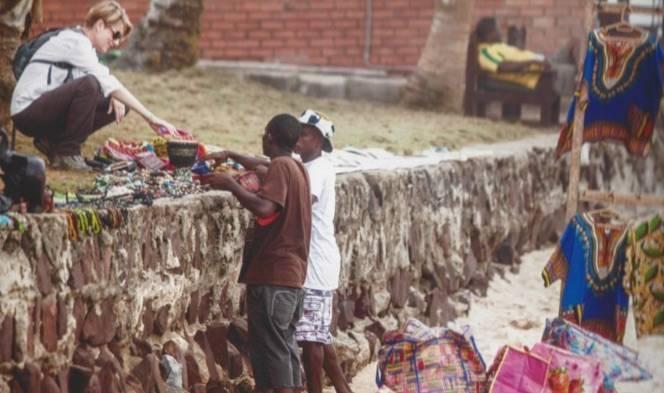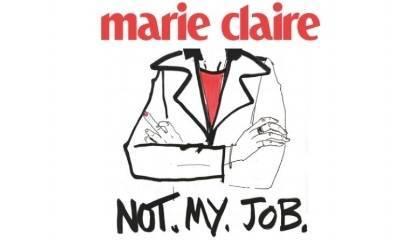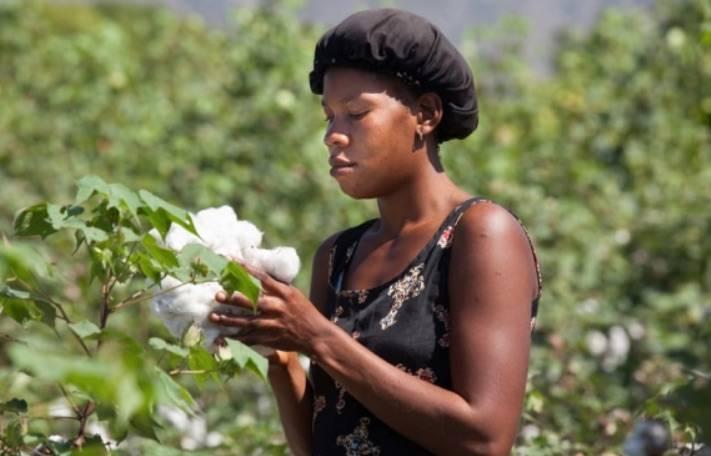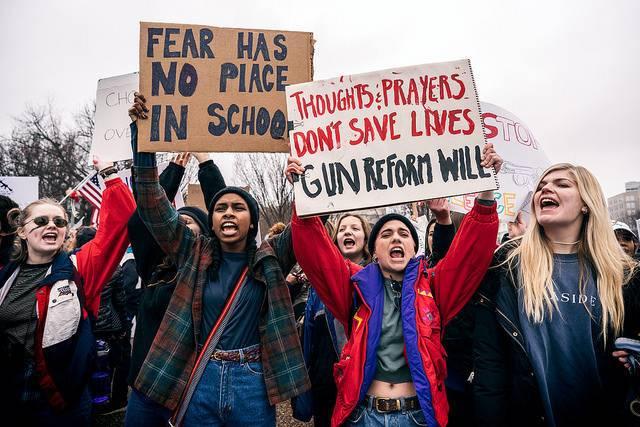Corporate Wellbeing And Why You Need To Care


By Lauretta Jaye
Over the last few years, individuals have been focusing on their personal wellbeing. Wellbeing now encompasses all aspects of a person’s life including eating well, having an active lifestyle, contributing to the world, mindfulness… the list goes on.
Similar to individuals, organizations are now meeting their employees where they are and have made a pivot from focusing on only corporate social responsibility to total company wellbeing.
What this Means
The definition of corporate wellness is simple: it is any program designed to encourage healthier lifestyle choices for your workplace.
According to a recent study, Corporate wellness programs are nearly an $8 billion industry in the United States alone, and the segment is expected to grow another 7.8 percent by 2021. Globally, it’s a $40 billion industry.
Why You Should Care
According to the Centers for Disease Foundation, worker illness and injuries cost U.S. employers $225.8 billion annually, or $1,685 per employee. In addition, $1 trillion is lost due to unaddressed employee chronic disease each year, according to the Milken Institute.
A study by the University of Louisville found that every dollar invested in a wellness program generated $7 in healthcare savings. The study also revealed that changing certain behaviors decreased the average number of health risks among employees from 5 or more health risks to 0 to 3 risks.
Those are some pretty staggering numbers and are a clear indicator that corporate wellbeing programs are an investment organizations need to make.
The 7 Dimensions of Wellness
Organizations shouldn’t be intimidated to establish a corporate wellness program. There is no one-size-fits-all solution as wellness means different things to different people. We found the seven dimensions of wellness, created by the University of California Riverside, that provide a great foundation. Companies should create solutions to help their employees strive towards balance in each.
- Social Wellness is the ability to relate to and connect with other people in our world. Our ability to establish and maintain positive relationships with family, friends and co-workers contributes to our Social Wellness.
- Emotional Wellness is the ability to understand ourselves and cope with the challenges life can bring. The ability to acknowledge and share feelings of anger, fear, sadness or stress; hope, love, joy and happiness in a productive manner contributes to our Emotional Wellness.
- Spiritual Wellness is the ability to establish peace and harmony in our lives. The ability to develop congruency between values and actions and to realize a common purpose that binds creation together contributes to our Spiritual Wellness.
- Environmental Wellness is the ability to recognize our own responsibility for the quality of the air, the water and the land that surrounds us. The ability to make a positive impact on the quality of our environment, be it our homes, our communities or our planet contributes to our Environmental Wellness.
- Occupational Wellness is the ability to get personal fulfillment from our jobs or our chosen career fields while still maintaining balance in our lives. Our desire to contribute in our careers to make a positive impact on the organizations we work in and to society as a whole leads to Occupational Wellness.
- Intellectual Wellness is the ability to open our minds to new ideas and experiences that can be applied to personal decisions, group interaction and community betterment. The desire to learn new concepts, improve skills and seek challenges in pursuit of lifelong learning contributes to our Intellectual Wellness.
- Physical Wellness is the ability to maintain a healthy quality of life that allows us to get through our daily activities without undue fatigue or physical stress. The ability to recognize that our behaviors have a significant impact on our wellness and adopting healthful habits (routine check ups, a balanced diet, exercise, etc.) while avoiding destructive habits (tobacco, drugs, alcohol, etc.) will lead to optimal Physical Wellness.
How Giving Fits In
Wellness expert Deepak Chopra’s 7 Spiritual Laws, similar to the 7 dimensions of wellness, were created to help us understand and strive towards achieving a sense of purpose and wellness. The second law is the Law of Giving: The universe operates through dynamic change…giving and receiving are different aspects of the flow of energy in the universe. And in our willingness to give that which we seek, we keep the abundance of the universe circulating in our lives.
Giving is part of wellbeing. As we read through what it means to be socially, emotionally, spiritually, environmentally, occupationally, intellectually and physically well, we see a multitude of ways where giving can be incorporated and utilized to achieve each.
Whether the giving is through the investment of time, energy or means, it is a crucial part of achieving wellness both individually and as an organization.
Image credit. Originally published here.
Gender Can be the Key to Unlocking Wider Diversity Challenges


By Fiona Dawson
I have been in business now for 30 years, and have always believed that women represent an incredibly powerful yet still untapped resource. The tragedy, is that there is no shortage of talent or ambition among women in the workplace. All too often however, women’s career progression can come to a standstill, the most notable being when they reach middle management.
Data from the UK shows that 73% of entry-level roles are occupied by women, yet this only translates into 34% of female managers, directors and senior officials. Despite many improvements in regulations and legislation, this proportion has only increased by one percentage point in the last six years. If we want to unblock our talent pipelines, we need stronger interventions at a business enterprise level to change workplaces and organisational cultures, and these changes must be led from the top.
Mars partnered with the UK Women’s Business Council last year to create ‘The Pipeline Effect’, a toolkit for enabling gender parity beyond middle management. In it we identify obstacles to women’s progress mid-career, of which a lack of role models was one. There is an important need for more female role models of all ages and levels who are approachable and relatable. We must have role models who are honest about their own their experiences and how they manage their trade-offs, as opposed to being portrayed as “superwomen” who ‘have it all.’
I’m thrilled that this month Mars is showcasing positive role models by shining a spotlight on some of our women in STEM. These amazing women are demonstrating first hand that it’s possible to have successful careers in areas which are traditionally underrepresented.
When I was growing up I had a number of role models. The most important was undoubtedly my mum, who encouraged all three of her children to do their best whatever their chosen path. In her 20’s, she enjoyed a successful career in HR, however sadly, had her employment terminated on marrying my father, under a rule which stayed on the statute books until 1973, called “The Marriage Ban”. This sense of injustice fuelled her with a belief that, should people want to, they should follow their careers, irrespective of personal circumstances.
During my teens my other role model was Mary Robinson, the first female Prime Minister of Ireland. She really inspired me at a pivotal moment in my life. I loved the fact that she got the job, although she wasn’t the natural successor. She totally broke the mould of women in leadership positions for me (this was the era of Dynasty, large shoulder pads and the “dog eat dog” mindset). She was softly-spoken, and a humanitarian, yet her authority was unquestionable; somehow she managed to be incredibly powerful without compromising her values.
Fundamentally, I believe that having a strong sense of your personal values enables you to find meaning in your work and perform at your best. If you can combine a role where your personal values match with a job, and a culture, you enjoy, you can deliver extraordinary results. Sharing common values does not mean surrounding yourself with people in your own likeness, in fact that can be incredibly dangerous; rather it can provide the bedrock to allow for even greater diversity of thought, gender and passport, in the knowledge you are all trying to strive for the same goal.
I have experienced that diversity enables better collective decision-making - at the moment my Global Management team has a strong gender split, and representation of nine different nationalities across 11 roles. The need for diversity in decision making is backed up by significant academic research including Scott Page, Professor of Political Science at the University of Michigan, and author of The Diversity Bonus, and can be especially useful when there are tough issues to conquer – my team is not afraid of challenging me and giving me honest feedback, which is often much needed!
Encouraging people to bring their authentic selves to work is the end goal of inclusivity. And by making our workplaces more inclusive we will ultimately be able to improve business performance.
Gender is the Trojan horse of diversity. If we frame our conversations about workplace diversity purely in terms of gender alone then we are only just figuring out part of the problem. But if we can make much-needed progress in gender diversity, eventually we can pave the way for future successes across all other diversity barriers and make our workplaces more inclusive.
Fiona Dawson is Global President, Food, Drinks, and Multisales, Mars Food
Photo: Mars
The Evolution of International Women’s Day as Brands #PressForChange


By Cone Communications
As International Women’s Day (IWD) continues to grow in momentum year over year, so too does company involvement. While in the past, many campaigns were short-lived or focused on more narrow issues like self-esteem and confidence, the conversation – and resulting programs – are shifting. Over the past year, movements like #MeToo and #TimesUp have evolved the dialogue, prompting brands to take on weightier elements of women’s rights. This year’s #PressForChange theme encouraged brands to forgo flashy campaigns and instead focus on creating programs that can make a lasting impact. As company involvement continues to increase, we’re sharing the efforts that pushed for lasting progress, those that played it safe and some which missed the meaning of the movement:
- Pushing the boundaries: BBC, Marie Claire and BrewDog all spoke up for equality in the workplace. To highlight the disparity in pay, BBC’s female staff stopped working at 4:22PM, the time when they stop getting paid compared to male colleagues. BrewDog also addressed the issue of pay inequality by launching a “new” Pink IPA, a spin-off of its famous Punk IPA. They charged women 20 percent less for the beer, donating 20 percent of the proceeds to causes that support equal pay. Marie Claire advocated for genuine equality in the workplace for women from all backgrounds by launching a new campaign in partnership with illustrator Laura Quick. The #NotMyJob campaign called on the magazine’s audience to share their experiences, which were turned into a series of pictures that “flip the finger” on harassment. In addition to the illustrations, the magazine partnered with a law firm to provide legal advice to its readers who have experienced discrimination.
- Playing it safe: Nike, The New York Times and Wikipedia all took an inspirational approach to celebrating women. Nike created an ad featuring Serena Williams and the obstacles she overcame to become the iconic athlete she is today. The New York Times published obituaries for 15 remarkable women they had overlooked since 1851. To provide more and accurate information for web searches, Wikipedia hosted an edit-a-thon dedicated to improving content on feminism and gender.
- Missing the meaning of progress: McDonald’s and MTV both altered their logos for the day, turning the Ms upside-down to represent Ws. Consumers were quick to point out the lack of authenticity in both efforts. McDonald’s was criticized for failing to pay its workers a meaningful wage – causing some of its women workers to face poverty and homelessness. Rather than making changes to its logo, Mattel re-designed its iconic Barbie, creating a range of dolls inspired by women who are good role models. While all the dolls offered a range of strong women to look up to, the dolls were all thin – missing the mark on body inclusivity and true diversity of women.
With the groundswell of support and expectation from consumers, companies are eager to join the conversation about women’s empowerment – but as this movement evolves, so must the ways companies engage on the issue. As we learned last year with “Fearless Girl,” consumers are willing to do research to ensure a company’s stance on the issue is authentic – that they are walking the talk. This year, consumers are demanding real progress. It’s no longer enough to acknowledge IWD with moment in time activations or feel-good campaigns, but instead to back those campaigns with business practices that support equal rights.
Illustration: Cone Communications
This article originally appeared on Cone Communications and was distributed by 3BL Media.
The Partners You Need to Truly Go Green


By Stephen Lewis
When Newsweek released its most recent list of the greenest American corporations, well-known names like Coca-Cola and Johnson & Johnson headlined the lineup of environmentally friendly candidates. What separates them from their competition? It isn’t that their products are transported and protected in sustainable packaging or that their restrooms feature low-flow toilets. It’s that they’ve adopted a holistic approach to the idea of being “green.”
In other words, it’s not a color, a branding term, or an attractive moniker — it’s a mindset.
To be green, companies must commit wholeheartedly to not only incorporating natural resources stewardship into their own practices and output, but also to working with like-minded vendors. Quite simply, an organization can be eco-conscientious to the nth degree, yet it’s missing a puzzle piece if its partners aren't also green.
Consider the Swedish firm SCA (Svenska Cellulosa Aktiebolaget) and its full line of green paper products and disposable goods. Surely Georgia-Pacific has similar green lines, but SCA isn’t just pushing out recycled napkins; it’s embodying the concept of thoughtful renewability by choosing a biological wastewater treatment facility, powering its plants with mostly biofuel, and taking necessary steps to attain a variety of eco-essential certifications.
Kohler offers a similar level of corporate commitment to walking the talk. Not only does it create amazing items for kitchens, bathrooms, and other spaces, but it also promises to “work in harmony with nature” as part of its Believing in Better mission. It’s a prominent unique selling proposition for the Wisconsin-based company.
Finally, the University of Virginia is jumping into the green fray by choosing eco-elements for one of its newest renovation projects. By installing LED lights and following careful rules, the university snagged a coveted Silver LEED (Leadership in Energy and Environment Design) Certification. Could anyone deny that the college is obviously interested in evolving with society’s demands for greener solutions?
What these organizations have in common is that they did their due diligence to find the right partners for every action they took. Your business can follow suit if you’re willing to strategically consider every relationship to see whether it meets — or exceeds — your own firm’s green standards. Follow these steps to streamline the process:
1. Separate the real from the rest.
Check out possible partners’ and vendors’ certifications as well as eco-related credentials. For instance, in the cleaning world, Green Seal is a third-party provider that certifies products as green. It aims to be transparent and honest in order to help businesses and individuals choose wisely. Another credentialing body for the facility world is LEED. Having LEED Certification doesn’t just showcase your pledge to consumers; it also enables you to increase rental costs if you lease out spaces and may also earn tax credits.
2. Make changes around the office.
Most workspaces have areas that could be greener. As the U.S. Department of Energy notes, you could cut utility bills significantly by just sealing places with cracks. Encourage employees and departments to suggest ideas that could help their environment become sustainable and healthier. Often, personnel are applying green practices in their homes, anyway. Find out what they’re doing right so you can follow those best practices. You don’t have to make every change possible — sometimes that’s not feasible. However, remain open-minded, because each step in the right direction makes a big difference in the long haul.
3. Understand that green products don’t equate to green companies.
Sure, a company sells a “green” product, but is it all lip service? A great example of this is a chemical supplier that sells a greener version of its top cleaning product. Though it's a step in the right direction, it doesn’t mean it's converted its buildings to use less water or switched to LED lights. The supplier could be wasting water and electricity to make what it deems “green” deliverables. Plus, it's still producing toxic cleaning products alongside its environmentally-friendlier varieties. Basically, it's not really eco-conscious despite having a facet of its product line focused on the green-minded consumer.
Like your company, milliCare prefers to partner with suppliers that don’t practice the art of green-washing, but instead focus on consistently doing the right thing for people and the planet. That’s what we did when we started, way before it was in vogue. Now, everyone’s logo seems to be green, but companies’ hearts aren’t necessarily behind the movement.
If you’re truly trying to change the way business occurs in your field, you owe it to your brand, people, and customers to be selective about the partners you select. Vet your relationships to ensure they align with your core values. That way, you’ll feel great about hitching your wagon to your vendors'.
Stephen Lewis is the technical director at milliCare, where he manages all equipment, methods, and products for the floor and textile cleaning company. Stephen, a certified senior carpet inspector and an IICRC master textile cleaner, has proudly served milliCare for almost 30 years.
Photo: Flickr Creative Commons
Women's History Month - Looking Back to Chart a Path Forward


By Joanna Geraghty
This series is sponsored by JetBlue and went through the normal TriplePundit editorial review process
March means saying goodbye to winter, turning our clocks ahead, watching the best of college basketball and celebrating Women’s History Month. In 1987, Congress declared March as National Women’s History Month to challenge us to reflect upon and recognize the achievements – great and small – of American women.
It’s also a time to think about what we each can do to harness the full potential of women in the workforce, and inspire the next generation. JetBlue is focusing on the future by encouraging girls to pursue STEM (Science, Technology, Engineering and Math) education as early as possible so they can eventually help fuel our airline and industry. This is one of the reasons we recently collaborated with Disney on two initiatives over the past few months to support the new film “A Wrinkle in Time,” in theaters March 9. Both events encouraged girls to be bold and pursue their passions in tech and website coding.
In aviation, a field that relies heavily on STEM, many of us look to trailblazing women such as Amelia Earhart, Bessie Coleman, Sally Ride, and Margaret Hamilton for inspiration. Reflecting on the remarkable paths these women charted inspires women and girls nationwide to dream - and dream big!
It may be hard to believe, but in 2018 less than seven percent of U.S. commercial pilots and three percent of aircraft mechanics and technicians are women. This is not just an aviation industry issue. According to the Congressional Joint Economic Committee, only 14 percent of all U.S. engineers are female. Statistics like these are why we created the JetBlue Foundation, to provide exposure, access, and funding to under-represented communities (women and minorities) in the STEM field so that JetBlue can continue to do its part to change the metrics of the aviation industry.
There is clearly a need for more women role models in many fields but particularly in STEM. Seeing is believing and now more than ever girls need to have role models who represent opportunities realized rather than challenges too daunting to face. Early exposure to STEM—through access and mentoring—helps enhance future career options and success.
Later this month, JetBlue’s Women in Flight Crewmember (our word for Employee) Resource Group will host their signature Fly Like A Girl event, bringing crewmembers’ daughters, nieces and local girls to our hangar at New York’s JFK Airport. For the fourth year in a row, participants will hear what it’s like to run an airline from female crewmembers representing careers below the wing, above the wing and everything in between. It’s an unforgettable day for everyone who attends, and we’ll be bringing the event to Salt Lake City and Orlando later this year.
Additionally, non-profit organizations such as Girls In Tech and Black Girls Code provide support to girls interested in STEM. In January, the JetBlue Foundation, JetBlue Equals – our airline’s Diversity & Inclusion platform and JetBlue Technology Ventures, in collaboration with Disney and Girls in Tech, hosted an event called “Even More Girls – in Tech" to introduce girls to website coding. Additionally, last week the JetBlue Foundation flew girls from Black Girls Code to Los Angeles for the "Warriors Who Code" challenge inspired by the film A Wrinkle in Time and sponsored by HP and Nissan.
We had the pleasure of collaborating with Disney around the release of A Wrinkle in Time. The film was directed by visionary Ava DuVernay and the story details an epic adventure across dimensions of time and space, examining the nature of darkness versus light and, ultimately, the triumph of love. The film is based on Madeleine L’Engle’s timeless classic which takes audiences through one girl’s transformative journey led by three celestial guides. The film demonstrates the strength that comes from embracing one’s individuality and that the best way to triumph over fear is to travel by one’s own light.
When asked about the woman who inspired me most, I can tell you – it’s a ton more than one. I think of my mother, who never once said, “A woman can’t do that.” However, at this stage in my life, it’s the women of JetBlue, hundreds of whom I have come to know well, who inspire me the most. These women inspire by their lives of achievement, generosity, and kindness. It is awe-inspiring to see how they put their enormous talents to work to bring together people from everywhere. In doing so, the women of JetBlue inspire me to want to be a better leader, airline professional, and person. I will forever be humbled and grateful for the sheer grace that our crewmembers exhibit in the pursuit of JetBlue’s mission every day.
Joanna Geraghty is President of the JetBlue Foundation. She also serves as JetBlue’s Executive Vice President of Customer Experience, responsible for Airports, Customer Support (Reservations), and Inflight, the airline’s main customer-facing teams. Ms. Geraghty served as JetBlue’s Executive Vice President, Chief People Officer from 2010-2014 and was previously the airline’s Vice President and Associate General Counsel and Director of Litigation and Regulatory Affairs. She has been with the New York-based airline since 2005.
Before joining JetBlue, Ms. Geraghty was a partner at the law firm of Holland & Knight, in their litigation section in New York. She received her B.A. from the College of the Holy Cross in 1994, her master’s in International Relations from Syracuse University’s Maxwell School of Citizenship and Public Affairs in 1997, and her J.D. from Syracuse University College of Law in 1997.
Images credit: Jet Blue
Principles for Future Leaders Navigating A Changing World


By Rohit Talwar, Steve Wells, Alexandra Whittington and Helena Calle
Perhaps the biggest challenge facing leaders today is ensuring they are capable of navigating themselves and their organizations through a complex and rapidly evolving future landscape.
So how can leaders develop a “futurist mindset” and act accordingly?
Our forthcoming book The Future Leader’s Handbook, is intended to help address the challenges in practical terms. Here we highlight six key principles to ensure we avoid clinging to the past and instead lead into the future.
- Maintain a Constant Dialogue with Key Stakeholders – The leaders who are least surprised by the future tend be those with the broadest radar. They are always exploring both the issues of today and the factors that could shape and disrupt the future. They do their data gathering in the most natural way possible – by talking constantly to customers, prospects, suppliers, partners, shareholders, competitors, industry associations, business networks, advisors, industry analysts, commentators, journalists and - most importantly – their own staff. They probe for ideas and developments that could accelerate quickly and for weak signals of potentially big changes to come.
- Learn Something New Every Day, Then Watch it Grow. Don’t leave scanning just to the futurists. Allocate at least a couple of hours a week to exploring what’s coming next. Good future leaders learn quickly to establish the habits of a trendspotter and seek out new information at every possible turn. Subscribe to newsletters, follow thought leaders on social media, join webinars, and work daily to widen your media diet to include information that broadens your mind. Seek out diverse information sources and cultivate your findings on a link-sharing or social media page of your own. Watch and learn as your observations go from fringe to mainstream.
- Let it Go! Letting go of that which no longer serves us is critical to understanding and acting on the emerging future, and to appreciating and responding to the strategies and business models of new and existing competitors. Cherished assumptions and worldviews may need to be overturned, and long-held ideas and beliefs that have served us well may need to be retired. Our thoughts and beliefs can become a prison which prevent us from exploring and making sense of the world that’s unfolding. Also key here is acknowledging that our own ideas may not be the best ones for any given situation, and that they also have a limited time to be acted upon before they might be overtaken by developments in the world around us.
- Shape a Forward-Looking Culture. Look at the dominant behaviors and stories around the organization. Who do we make heroes of? Are we celebrating and rewarding those who scout out emerging change and seek to pioneer new ideas? How are we using public spaces – are staff surrounded by constantly changing images, icons, and questions of what’s next – or charts of past performance, safety notices, and policy statements? How is our appraisal and bonus system designed – are innovation and challenging the “system” encouraged and rewarded?
- Take a Sustainability Perspective. Sustainability has often been talked about in the context of the environment; climate change, wildlife protection, and natural resource consumption. Increasingly, we see organisations taking a much broader view of sustainability that incudes economy, business, and employment, eradicating inequality, developing ethical business practices, our communities and eco systems, education, and personal fulfilment. Perhaps we should be posing questions about how our businesses and our business practices support sustainability, rather than damaging it.
- Define and Redefine Organizational Identity. Fluctuating conditions in the business environment impact organizations in different ways. Being attentive to unexpected shifts in society gives future leaders an innate sense for when company culture, identity, and values should evolve. A future leader inspires others with a consistently positive attitude towards change.
Never has it been more important for those leading organizations to demonstrate a deep understanding of the forces, trends, developments, and ideas shaping the emerging future: which is why well-known companies are starting to hire futurists. Stakeholders want reassurance that our decision making is based on what’s next as well as what’s been.
A future leader needs the ability to bring people together around new ideas, and remain attuned to unique connections between ideas. The skills are learnable as they build on an innate tendency within human beings to look ahead.
Rohit Talwar, Steve Wells, Alexandra Whittington and Helena Calle are from Fast Future which publishes books from future thinkers around the world exploring how developments such as AI, robotics and disruptive thinking could impact individuals, society and business and create new trillion-dollar sectors.
Photo: Flickr creative commons
Timberland Helps Rebuild Haiti’s Cotton Industry


Cotton farming has returned to Haiti under the sponsorship of Timberland, the New England outdoor lifestyle brand, after a 30-year absence.
The crop has been reintroduced to the devastated severely deforested island state to revive agriculture and garment manufacturing, boost the economy, raise incomes and aid environmental restoration.
Smallholder farmers are planting trees to earn cottonseed, tools and training. The same farmers will sell to Timberland, which has agreed to buy up to a third of the cotton it requires from Haiti if the price and quality are acceptable and enough is produced.
A total of 34,000 cotton farmers working 17,000 farms are expected to be in business within five years.
During that time at least 25 million trees are due to be planted and the cotton businesses estimate their incomes will be doubled. Alongside cotton, farmers intend to increase food yields for local consumption.
Haiti’s Smallholder Farmers Alliance hopes this growth will empower women farmers through microloans, business training and leadership opportunities.
The alliance and Timberland are looking ahead to the summer when farmers will introduce the best-quality cotton varieties, which adapt readily to local conditions and organic cultivation.
Timberland sees the cotton program as socially responsible business as it is line with the company’s business strategy and the UN Sustainable Development Goals, and the impact and results can be measured. In addition, the company has made a firm commitment at all levels, is engaging with employees for company-wide support, is joining with credible partners for best outcomes, and is communicating its activities and their results to customers and other stakeholders.
Atlanta McIlwraith, Timberland’s senior manager of community engagement, said: “Thousands of smallholders earned better grain and vegetable seeds, farm tools, training and other services [after the company first supported Haiti agriculture in 2010] by growing and planting close to 6.5 million trees to date.
“The next chapter in this story follows on from a feasibility study, which determined that it makes sense to reintroduce cotton to Haiti, and Timberland now aims to evolve its role from being a sponsor to becoming a customer for organic cotton.”
Pierre Marie du Mény, the commerce and industry minister, offered encouragement: “On behalf of the Haitian people I want to thank Timberland and the Smallholder Farmers Alliance for bringing cotton back to Haiti. This is a big opportunity for the country and the people of Haiti.”
Photo: Thomas Noreille / SFA
This story originally appeared on 3BL Media.
New GRI Service to Improve CSR Report Quality


By Global Reporting Institute
The Global Reporting Institute has recently launched a service that fills a much-needed gap in the market. The new Disclosure Review Service provides companies with feedback to help improve the quality of sustainability. It is designed to help organizations improve the content of their report by reviewing specific disclosures and determine whether the organization has responded to the information requests from the requirements outlined in the GRI Standards.
The Disclosure Review Service covers a selection of 10 disclosures, strategically selected to address an organization’s approach towards stakeholder engagement and materiality assessment, thus aiming to improve the overall quality of the report. More disclosures will be added later this year, extending the service to include management approach disclosures.
Organizations that successfully complete the service will receive an organizational mark, with an accompanying statement, to be used in their report.
What does the Disclosure Review Service involve?
GRI reviews an organization’s draft report, either in accordance with or referencing the GRI Standards, and assesses what the organization has reported on the select disclosures from GRI 102: General Disclosures.
Based on this assessment, GRI will provide detailed feedback that guides the client to better respond to the information requests set out in the GRI Standards. A final feedback report, focusing on the application of the GRI Materiality and Stakeholder Inclusiveness Principles, will help the organization prepare for future reporting cycles.
It takes an estimated four to eight weeks to complete the review.
"Improving the quality of sustainability reporting is one of GRI's key focus areas," explains Shivani Rajpal, Head of Services at GRI. "The improvements that organizations will be able to make by using GRI's new Disclosure Review Service will increase the transparency needed to build a better world."
Article and photo originally published on 3BL Media.
As the Gun Violence Debate Continues, More Data Suggests Brands Should Take Stands


As we have recently covered here on TriplePundit, last month’s tragedy in Florida has compelled many companies to take a stand on gun violence. The definition of corporate social responsibility is evolving rapidly - no longer is this movement solely about tabulating a company’s greenhouse gas emissions or improving supply chain transparency.
The debate will continue to rage and citizens will continue to yell at the TV screen based on who the talking heads are on Fox News or MSNBC. But some evidence suggests the debate does not even matter. More data suggests that when it comes to gun violence, consumers are becoming more comfortable with companies and brands taking a stand on this controversy.
According to the research firm Morning Consult, 58 percent of adults polled agree that it is appropriate for brands to wade into the gun control debate. Only one-third of respondents disagreed, with less than 10 percent undecided.
The survey polled 2,200 adults, who were interviewed via an online survey. Morning Consult said the data were weighted to represent a sample of U.S. adults based on age, race or ethnicity, gender, educational level, and the region in which they live.
It is no surprise that almost three-fourths of the respondents who identified as Democrats side with brands taking stands on gun control. Political independents’ sympathies almost mirrored the overall survey pool, agreeing at a rate of 53 percent versus 34 percent who disagreed.
But even amongst self-identified Republicans, there was a split: 46 percent of them agreed with the statement that they were comfortable with brands taking a stand on gun violence; 47 percent disagreed.
Of course, semantics can make a difference in how people respond when polled - far more American sided with efforts to work on “gun violence prevention” than “gun control.” And this is only one survey, even if its respondent pool is perfectly weighed.
Yet brands must keep in mind that the response to any and all policy changes will vary. Morning Consult’s data suggested that after MetLife announced the end of its NRA discount, its overall favorability perception rating ticked upward. Delta, however, faced an overall downward trend in the wake of the controversy over ending its NRA discount and the response of the Georgia State Legislature. Dick’s Sporting Goods witnessed its perception rise or fall based on political affiliation. Meanwhile, Walmart saw its positive sentiment rise across the political divide shortly after it announced that gun buyers would have to be at least 21 years old.
As with any hot-button issue, the challenge companies will continue to face on problems such as gun violence will rest on how well such policy changes are communicated. Nevertheless, insists Morning Consult, 71 percent of its survey respondents said taking stands on social issues, period, is important - whether they are environmental sustainability, gender or LGBT equality or health care access. What is clear is that staying silent or “neutral” is no longer an option.
Image credit: Lorie Shaull/Flickr
International Women’s Day: Three Simple Ways We Can All #PressforProgress for Women in STEM


By Mary Snapp
Women around the world are taking to the streets on International Women’s Day to urge faster progress on gender parity in economic opportunity, education and other important issues. The theme this year, #PressforProgress, is perfectly tuned to the challenges society faces.
I know what’s it’s like to be the “first woman.” It’s really lonely! It feels like all eyes are watching you. I was the first woman hired by an auto company to give science and technology demonstrations at school assemblies in middle schools and high schools, on the road for months at a time. I was the first female attorney hired at Microsoft, supporting the engineering groups, and the “only woman in the meeting” far more times than I could count. Were it not for a few male mentors who took a chance to reach out over the years, I likely would have left my profession as a public relations professional, and later a lawyer. Now it’s an honor to “pay it forward.”
As a society, we have a responsibility to inspire the next generation of female science, technology, engineering and math (STEM) leaders. Today’s youngest students – known as Gen Z – are unlike any previous generation. They are digital natives with the creativity and confidence to use STEM to drive to positive change. Yet we are failing to keep them engaged and excited about the possibilities that STEM studies and careers provide. Unless things change much faster, many in this bright, hopeful generation will not enter these fields.
These are among the reasons Microsoft Philanthropies provides grants to nonprofits that prioritize increasing diversity in computer science, and more than half of beneficiaries are female. For the past four summers, we partnered with Girls Who Code, for example, to host high school girls enrolled in the nonprofit’s summer immersion program. Girls spend a portion of the summer on many of our U.S. campuses learning to build apps, games, websites and hardware. Microsoft women mentor the girls and often stay in touch after the program is complete.
Another nonprofit we support is Laboratoria, headquartered in Lima, Peru, which trains, in mere months, young women from low-income backgrounds to become web developers. Companies hired more than three-quarters of Laboratoria’s graduates into technology jobs that rely on computer science skills, and the average graduate triples her income.
“I always had that eagerness to help and advance myself,” Laboratoria graduate Lizeth Kenny Lopez Zamudio said recently about her experience with the program. She took a Microsoft Azure workshop where she learned to use new software platforms, programming languages and artificial intelligence. She now uses those skills at her job in a financial services company by programming customer service chatbots, working remotely on a virtual machine and presenting case studies on Azure.
Our education team also does excellent work around the world helping inspire girls to pursue computer science. Among many examples, a partnership forged with the United Arab Emirates help support girls as they participate in international technology competitions. Our education team also develops STEM curricula such as Minecraft: Education Edition, Hacking STEM and MakeCode, which help educators engage students with hands-on, immersive STEM experiences. The Minecraft tutorials they built for Code.org, a nonprofit that also emphasizes outreach to girls, has reached over 85 million people.
On International Women’s Day, and beyond, I’m calling on everyone – women and men – to take the first steps in encouraging younger women and girls to pursue STEM careers. Here are a few ways to get involved:
- Mentoring: On International Women’s Day, several of our senior leaders will reach out to girls in our local community and elsewhere, to paint a relatable picture of what it’s like to work in STEM. Microsoft will also host more than 125 DigiGirlz events around the world, to give middle and high school girls opportunities to learn about careers in technology, connect with Microsoft employees, and participate in hands-on computer and technology workshops. You can volunteer as a mentor through nonprofits such as MillionWomenMentors.com and Girls Who Code’s Clubs Program.
- STEM workshops and speakers: Microsoft stores will host DigiGirlz workshops and Women in STEM panels throughout March, featuring women in aviation, coding, gaming and space. Learn to code and meet internationally recognized, aspiring astronaut 16-year-old Alyssa Carson, in Garden City, New York and Troy, Michigan. Meet former astronaut and retired U.S. Navy Capt. Heidemarie Stefanyshyn-Piper, in Bellevue, Washington. Learn more at the Microsoft Store website.
- Socialize STEM: Please share stories about girls doing amazing things in STEM, using the #MakeWhatsNext hashtag. Participate in the @MicrosoftEDU’s global tweetmeet using #MSFTEduChat, to share your ideas to motivate young women to pursue STEM careers.
Gender disparity in STEM fields is a multi-faceted problem. We should each do a small part, and stand up as proud STEMinists. If we each inspire at least one young woman to see the immense potential in STEM fields, progress will come faster, and we’ll all benefit.
Mary Snapp is Corporate Vice President and Lead for Microsoft Philanthropies
Photo: Microsoft Philanthropies provides grants to nonprofits, including Girls Who Code, that prioritize increasing diversity in computer science. Photo: Girls Who Code
This article originally distributed by 3BL Media.